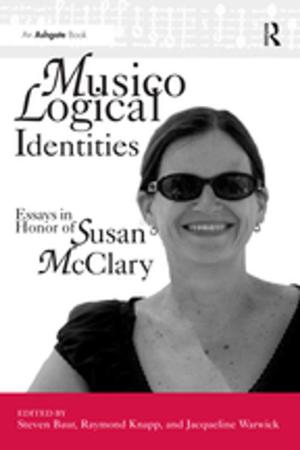Corporate Social Opportunity!
Seven Steps to Make Corporate Social Responsibility Work for your Business
Business & Finance, Business Reference, Business Ethics, Management & Leadership, Management| Author: | David Grayson, Adrian Hodges | ISBN: | 9781351280860 |
| Publisher: | Taylor and Francis | Publication: | December 4, 2017 |
| Imprint: | Routledge | Language: | English |
| Author: | David Grayson, Adrian Hodges |
| ISBN: | 9781351280860 |
| Publisher: | Taylor and Francis |
| Publication: | December 4, 2017 |
| Imprint: | Routledge |
| Language: | English |
Don't be misled by the word social in the title.
This is a book about how to improve corporate performance and gain competitive advantage.
In Corporate Social Opportunity! Grayson and Hodges challenge perceived wisdom that adherence by business to corporate social responsibility (CSR) is a zero-sum game where the impact on companies is added costs and extra regulatory burden.
From their unique vantage point working with leaders of global businesses and of local communities, the authors explain how powerful drivers forcing companies to adopt stringent social, ethical and environmental standards simultaneously create largely untapped opportunities for product innovation, market development and non-traditional business models.
The key to exploiting these opportunities lies in building CSR into business strategy, not adding it on to business operations. With examples from 200 companies to illustrate their case, they outline both in theory and practice a seven-step process managers can apply to assess the implications of CSR on their business strategy and identify their own corporate social opportunities. Business is operating in a whirlwind of interacting global forces: revolutionary developments in communications and technology, significant changes in markets, shifts in demographics, and a transformation of personal values. The fallout from these forces is the underlying reason that corporate social responsibility has come of age. These global forces have led to a number of issues-such as ecology and environment, human rights and diversity, health and well-being, and communities-becoming potential liabilities for companies. Once regarded as 'soft' management issues, they are now increasingly recognised as hard to predict and hard for the business to deal with when they go wrong. Corporate Social Opportunity!, by the authors of the best-selling Everybody's Business moves the argument from the "why" of corporate social responsibility (CSR) to the "how" and beyond – to a future where CSR is perceived as an opportunity for business both in terms of reaping the benefits of retaining brand or organisational value and by developing new products and services, serving new markets and adopting new business models. This is not always a story of black and white, of what is right or what is wrong. Often it embraces apparently conflicting demands which require the application of judgement, guided by a clear sense of overall direction and corporate purpose. This book is designed to act as a compass for aiding navigation through such dilemmas and complex decisions.
Using examples of current good practice, detailed interviews with leading CEOs and newly created diagnostic planning tools, all framed within a seven-step model for making CSR happen, the book aims to provide a practical guide to help business leaders and their managers understand how to assess the impact of corporate social responsibility factors on their core business strategy and operations and help them identify and prioritise between subsequent options and resulting business opportunities.
The book is structured into two parts. Both parts describe the same seven-step model which, if followed, will help managers think through desired changes to business strategies, and necessary corresponding changes to operational practices. In Part 1, the seven steps-triggers; scoping; making the business case; committing to action; resources and integrating operations; engaging stakeholders; and measuring and reporting-are described and illustrative evidence and corresponding data provided. In Part 2, the authors have created a worked example of the diagnostic processes that form the backbone of the seven steps, based on the health and well-being issue of fast food and the growing problem of obesity, particularly among children, along with notes on how a manager might work through the processes with colleagues.
The authors are pro-business although not business-as-usual. The book is written first and foremost with the purpose of helping to improve business performance, because business is after all the principal motor for growth and development in the world today. The authors argue that companies adhering to best practice in CSR and taking advantage of possibilities inherent in Corporate Social Opportunity! are good for shareholders as well as customers and employees.
Don't be misled by the word social in the title.
This is a book about how to improve corporate performance and gain competitive advantage.
In Corporate Social Opportunity! Grayson and Hodges challenge perceived wisdom that adherence by business to corporate social responsibility (CSR) is a zero-sum game where the impact on companies is added costs and extra regulatory burden.
From their unique vantage point working with leaders of global businesses and of local communities, the authors explain how powerful drivers forcing companies to adopt stringent social, ethical and environmental standards simultaneously create largely untapped opportunities for product innovation, market development and non-traditional business models.
The key to exploiting these opportunities lies in building CSR into business strategy, not adding it on to business operations. With examples from 200 companies to illustrate their case, they outline both in theory and practice a seven-step process managers can apply to assess the implications of CSR on their business strategy and identify their own corporate social opportunities. Business is operating in a whirlwind of interacting global forces: revolutionary developments in communications and technology, significant changes in markets, shifts in demographics, and a transformation of personal values. The fallout from these forces is the underlying reason that corporate social responsibility has come of age. These global forces have led to a number of issues-such as ecology and environment, human rights and diversity, health and well-being, and communities-becoming potential liabilities for companies. Once regarded as 'soft' management issues, they are now increasingly recognised as hard to predict and hard for the business to deal with when they go wrong. Corporate Social Opportunity!, by the authors of the best-selling Everybody's Business moves the argument from the "why" of corporate social responsibility (CSR) to the "how" and beyond – to a future where CSR is perceived as an opportunity for business both in terms of reaping the benefits of retaining brand or organisational value and by developing new products and services, serving new markets and adopting new business models. This is not always a story of black and white, of what is right or what is wrong. Often it embraces apparently conflicting demands which require the application of judgement, guided by a clear sense of overall direction and corporate purpose. This book is designed to act as a compass for aiding navigation through such dilemmas and complex decisions.
Using examples of current good practice, detailed interviews with leading CEOs and newly created diagnostic planning tools, all framed within a seven-step model for making CSR happen, the book aims to provide a practical guide to help business leaders and their managers understand how to assess the impact of corporate social responsibility factors on their core business strategy and operations and help them identify and prioritise between subsequent options and resulting business opportunities.
The book is structured into two parts. Both parts describe the same seven-step model which, if followed, will help managers think through desired changes to business strategies, and necessary corresponding changes to operational practices. In Part 1, the seven steps-triggers; scoping; making the business case; committing to action; resources and integrating operations; engaging stakeholders; and measuring and reporting-are described and illustrative evidence and corresponding data provided. In Part 2, the authors have created a worked example of the diagnostic processes that form the backbone of the seven steps, based on the health and well-being issue of fast food and the growing problem of obesity, particularly among children, along with notes on how a manager might work through the processes with colleagues.
The authors are pro-business although not business-as-usual. The book is written first and foremost with the purpose of helping to improve business performance, because business is after all the principal motor for growth and development in the world today. The authors argue that companies adhering to best practice in CSR and taking advantage of possibilities inherent in Corporate Social Opportunity! are good for shareholders as well as customers and employees.















